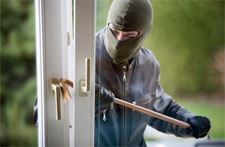 One of the primary purposes of a Homeowners Association (HOA) is to manage and maintain the common areas within a development. Although the specific responsibilities assigned to a HOA may vary greatly depending on the terms of their governing documents, the HOA generally has a duty to act diligently and in good faith. Often times, these responsibilities include the repair and maintenance of security and safety equipment, including street lights, surveillance cameras and entry gates.
One of the primary purposes of a Homeowners Association (HOA) is to manage and maintain the common areas within a development. Although the specific responsibilities assigned to a HOA may vary greatly depending on the terms of their governing documents, the HOA generally has a duty to act diligently and in good faith. Often times, these responsibilities include the repair and maintenance of security and safety equipment, including street lights, surveillance cameras and entry gates.
In the recent unpublished case of Girardi v. San Rafael Homeowners Association, (2012), the question arose of whether the Association may be liable for a failure to adequately maintain common area security equipment when a homeowner suffers damages from being burglarized.
In Girardi, the plaintiffs, Mr. and Mrs. Girardi, owned and lived in a luxury home in Alta San Rafael common interest development (“development”). While the Girardis were away from their home, it was burglarized, and jewelry with a value of approximately $1,000,000 was stolen. Approximately a year later, the home was burglarized again. At the time of the original incident, the development had several non-operational street lights, a front gate that was manual and therefore remained open, and no security guard or security cameras. Despite a meeting to inform the membership of the original incident, no improvements or repairs were made in the year between the two incidents.
After the second incident, the Girardis filed a complaint alleging that the Association’s failure to hire a security guard, install a security camera and functioning gate, and replace broken street lights, amounted to negligence and resulted in their home being burglarized.
In finding for the Association, the trial court found that, 1) as a matter of law, the Association’s duty to maintain the common area did not extend to a duty to protect the homeowner’s property from criminal acts of third parties, and 2) there was no evidence to suggest that the Association’s failure to provide security guards, motorized gates, security cameras or street lighting was the actual cause of the property loss.
The Girardis appealed the decision, and once again the court found in favor of the Association. In ruling, the appeals court focused on the issue of causation, noting that because the Girardis could not establish the identity of the burglars and thus could not show that they were unauthorized to enter the development, they had insufficient evidence to show that the Association’s failure to provide increased security or adequately maintain the common area was a substantial factor in causing the damages. In quoting the Supreme Court , the court noted that in such situations the plaintiff may not speculate as to the cause, but must “show the injury was actually caused by the failure to provide greater measures.” Saelzler v. Advanced Group 400, (2001) 25 Cal.4th 763. Accordingly, unless the plaintiff is able to show that the criminal was not authorized to be on the property, the Association will not be held responsible. Furthermore, as noted by the trial court, even where the identity of the criminal is established, it is unlikely that the Association’s duties include protection from third party criminal acts.
|
The ruling in Girardi provides insight into HOA liability for criminal acts. Although it is unlikely that a HOA will be held liable in similar circumstances, it is important that HOAs take their responsibilities and duties to maintain and repair the common areas seriously. This is especially true where HOAs have knowledge of similar prior criminal acts. In such circumstances the HOA is deemed to have been “put on notice,” thereby significantly increasing the risk of liability. HOAs facing these types of issues should consult with legal counsel to determine the extent of their security responsibilities with respect to common areas. |
Content provided by Kai MacDonald, Esq.
 HOA Lawyer Blog
HOA Lawyer Blog

